What's New
Displaying results 1421 - 1430 of 4052
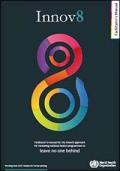
Resource | Tools,
Around the world, national health authorities and programmes are striving to ensure that “no one is left behind”, in keeping with this cross-cutting principle in the Sustainable Development Goals (SDGs). The Innov8 approach for reviewing national health programmes to leave no one behind (the Innov8 approach) aims to support these efforts. It also supports the progressive realization of universal health coverage and the right to health.
As the partnering publication to the aforementioned Innov8 Technical Handbook, this Facilitator's Manual is meant for persons conducting the capacity-building workshops of Innov8 applications.
Depending on the type of national and programmatic application, the World Health Organization (WHO)
suggests that at least three capacity-building workshops be conducted for/with the national
review team. One workshop is convened in each of the consecutive review process phases, which we
describe here as sensitization, review and redesign.
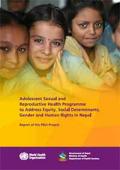
Resource | Publications,
In 2000 the National Adolescent Sexual and Reproductive Health Strategy was developed by the Family Health Division (FHD) of the Ministry of Health and Population (MoHP). Following the strategy, in 2007 the implementation guidelines for ASRH were developed, and in 2010 the National Adolescent Sexual and Reproductive Health Programme was developed by FHD. In addition National Adolescent Friendly Health Services (AFHS) standards and actions was developed as required at the programmatic and facility level.
During the last quarter of 2015, a review was conducted to ascertain how the national Adolescent Sexual Reproductive Health Programme of Nepal could better address equity, gender, human rights and social determinants of health, hence working to ensure that “no adolescent is left behind”. This review was led by the Family Health Division of the Ministry of Health and Population (MoHP) of Nepal, with support from the World Health Organization (WHO) and Health Research and Social Development Forum (HERD), and in conjunction with other members of an interdisciplinary review team. This report is a description of the review team’s analysis, which applied a review methodology.
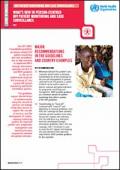
Resource | Guidelines,
The 2017 WHO Consolidated guidelines on person-centred HIV patient monitoring and case surveillance aim to help countries to implement WHO strategic information indicators for HIV (1) and WHO guidance on the use of antiretroviral drugs for HIV treatment (2) into routine HIV patient monitoring and health information systems.
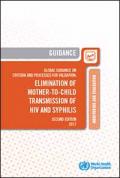
Resource | Guidelines,
In 2014, the World Health Organization (WHO) released the first edition of the Global guidance on criteria and processes for validation: elimination of mother-to-child transmission of HIV and syphilis (EMTCT). In 2015, the Global Validation Advisory Committee for EMTCT was established and, as of October 2017, eleven countries or territories have been validated for achieving elimination of mother-to-child transmission (MTCT) of HIV and/or syphilis as a public health problem. This second edition of the EMTCT global validation guidance document captures the learning from these validation efforts to date, and reflects WHO’s commitment to the global effort to eliminate MTCT of HIV and syphilis, and expand the capacity of maternal and child health services to address vertical transmission of other communicable diseases.
This second edition of the EMTCT global validation guidance document provides standardized processes and consensus-developed criteria to validate EMTCT of HIV and syphilis, and to recognize high-HIV burden countries that have made significant progress on the path to elimination. The guidance places strong emphasis on country-led accountability, rigorous analysis, intensive programme assessment and multilevel collaboration, including the involvement of communities of women living with HIV.
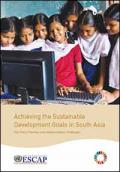
Resource | Publications,
This Report provides a timely analysis of the SDG outlook in the subregion. It begins by discussing the MDG achievements and the lessons that can be drawn from the MDG experience in the subregion. From here, the Report then provides an action plan for accelerating SDG achievement. In particular, the Report focuses on seven key policy priorities, taking cognizance of the relationships between the SDGs goals and targets which need to be catalyzed by inclusive and sustainable transformation policies (Section 3). The Report then discusses the subregional and regional institutional arrangements required for SDG implementation (Section 4), and highlights the implementation challenges and measures needed to address the capacity gaps (Section 5). The Report concludes with remarks on South Asia’s stake in the global achievement of the SDGs.
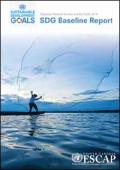
Resource | Publications,
The Asia-Pacific Sustainable Development Goals (SDG) Baseline Report introduces an innovative regional progress measurement methodology. The report estimates objective and feasible target values for the region. It makes use of available data to establish a baseline and assess the gaps which need to be closed if the SDGs are to be achieved by 2030. The analysis uses national values for 30 per cent of the proposed global SDG indicators to assess regional achievements for each SDG in the baseline year 2015. It applies a subset of these indicators to illustrate the progress made since 2000 and progress needed to meet the 2030 targets.
The report presents the SDG baseline for the Asia and the Pacific both at the regional and sub-regional level for selected targets of each SDG. It uses the latest country data and supplementary statistical information aligned to the proposed global indicators.

Resource | Publications,
The concept of "person-centred care" emerged early in the AIDS epidemic with the recognition that AIDS could not be ended without addressing the multiple factors that influence health, vulnerability, equality and economic independence. In placing the person—with all their complex and interconnected needs—at the centre of the response, services for people living with HIV had to become more integrated, more inclusive and more responsive.
In this publication, personal stories of people living with or affected by HIV highlight how the AIDS response has increased inclusion, ensuring access to services for all, embracing diversity, and reaching vulnerable and marginalized people. The stories provide examples of how the AIDS response pioneered innovations, providing integrated service delivery, removing barriers to services, and working with communities.
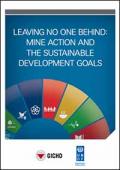
Resource | Publications,
At the core of the 2030 Agenda is the goal to ‘leave no one behind’ and to ‘reach the furthest behind first’ to ensure inclusiveness in all its forms. Given the humanitarian and developmental impacts of mines, cluster munitions and other explosive remnants of war, mine action often finds itself at the forefront of efforts to rebuild lives and communities that have become marginalised, and rendered vulnerable by conflict. But, experience suggests that mine action dividends do not always benefit all members of society equally.
The study recommends strategic planning processes, the definition of indicators, sustainable development-oriented priority-setting, monitoring, and data collection and analysis as the areas where mine action can do better to ensure no one is left behind and contribute to more equitable, participatory and inclusive societies.
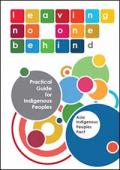
Resource | Publications,
This Practical Guide aims at providing basic information for indigenous peoples about the 2030 Agenda for Sustainable Development, its background and links to indigenous peoples rights and aspirations, and the opportunities and challenges it provides. Further, the Guide will give practical guidance on how indigenous peoples can engage in sustainable development processes in order to assert and fulfill their right to self-determined development, and contribute to the achievement of sustainable development for all.
The Guide also gives references and links to other publications and materials relating to sustainable development and indigenous peoples for those who want to further study specific issues.
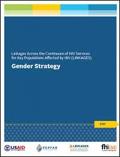
Resource | Publications,
The Linkages Across the Continuum of HIV Services for Key Populations Affected by HIV (LINKAGES) project envisions a world in which members of key populations (KPs)—gay men and other men who have sex with men (MSM), sex workers (SWs), people who inject drugs (PWID) and transgender people—can exercise their right to live healthy and productive lives. In this vision, harmful gender norms have been challenged and transformed so that they no longer cause inequalities and give rise to stigma, discrimination, and violence against members of KPs. Although we know that we cannot achieve this vision alone, the LINKAGES project—as the first global KP project supported by the U.S. President’s Emergency Plan for AIDS Relief (PEPFAR) and the U.S. Agency for International Development (USAID)—recognizes the importance and power of our commitments and actions both globally and within each country where we work. Our gender strategy describes these commitments and lays out specific actions to fulfill them.





